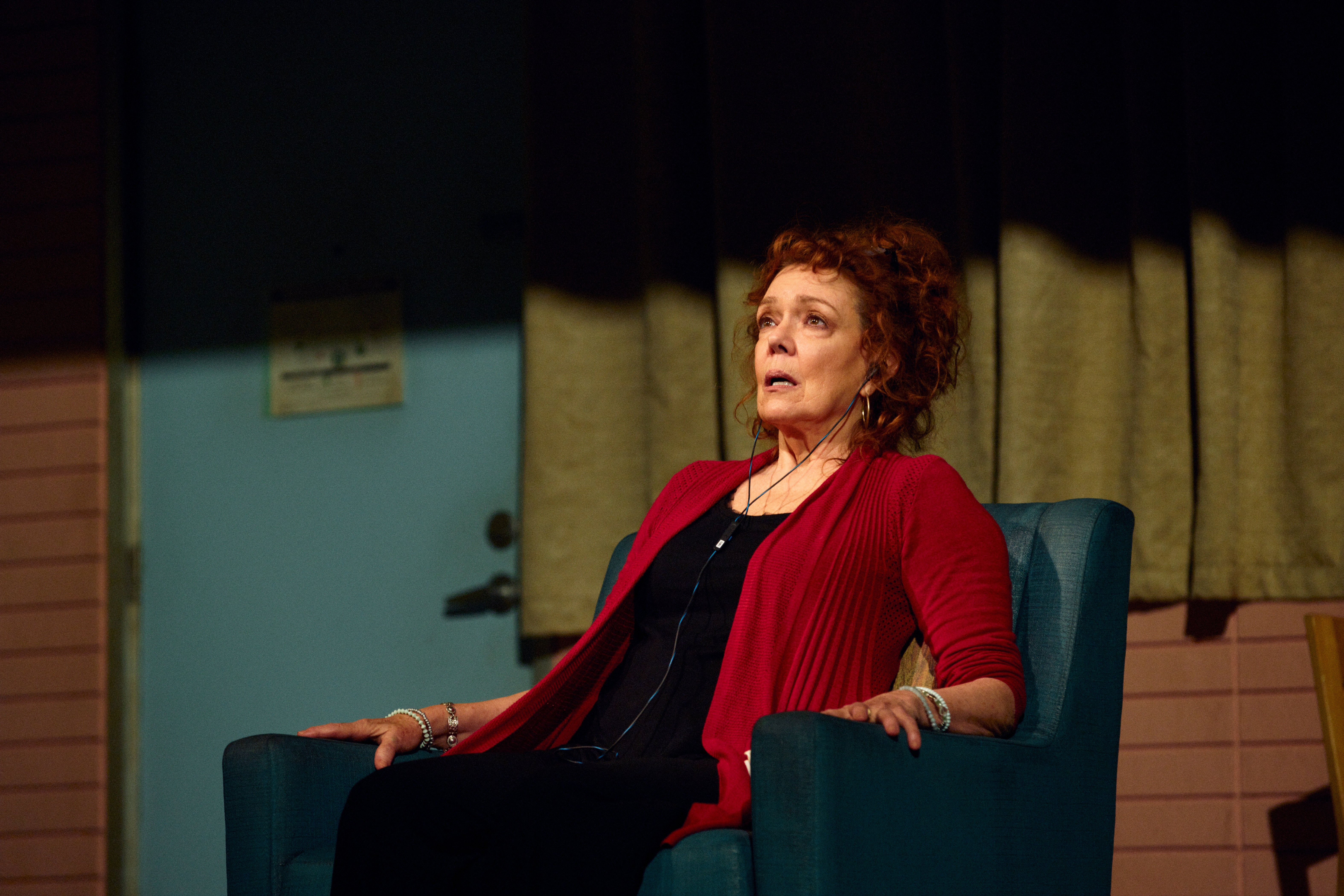She was held captive and abused for five months. Now her son is telling her story on Broadway
In 1997, Dana Higginbotham was abducted and brutalized by a violent man over a period of five months. Clémence Michallon writes about her ordeal and the ways it unfolds on the stage


Your support helps us to tell the story
From reproductive rights to climate change to Big Tech, The Independent is on the ground when the story is developing. Whether it's investigating the financials of Elon Musk's pro-Trump PAC or producing our latest documentary, 'The A Word', which shines a light on the American women fighting for reproductive rights, we know how important it is to parse out the facts from the messaging.
At such a critical moment in US history, we need reporters on the ground. Your donation allows us to keep sending journalists to speak to both sides of the story.
The Independent is trusted by Americans across the entire political spectrum. And unlike many other quality news outlets, we choose not to lock Americans out of our reporting and analysis with paywalls. We believe quality journalism should be available to everyone, paid for by those who can afford it.
Your support makes all the difference.The story of Dana Higginbotham unfolds on the minimalist stage of a Broadway theatre. In the venerable pre-war venue, the hustle and bustle of Times Square has surrendered to silence. The quiet is broken only by a voice – that of Higginbotham herself, recounting the harrowing five months she spent held captive and tortured by a deranged man named Jim. Higginbotham isn’t on stage, though. That would be the award-winning actor Deirdre O’Connell, lip-syncing to tapes of Higginbotham’s testimony. And the playwright? That would be Higginbotham’s own son, Lucas Hnath.
It’s impossible to tell the story of Dana Higginbotham, the person, without also telling the story of Dana H, the play. In 2015, Steve Cosson, a director, writer, and artistic director, spent several days interviewing Higginbotham at Hnath’s request. “I was interested in her telling the story to someone who knew nothing. So that there’s no shorthand,” Hnath later told The New York Times. The tapes of those interviews became the basis for – and the soundtrack of – Dana H.
Over the course of an hour and 15 minutes, Higginbotham’s voice recounts a series of events that occurred in 1997, while Hnath was away at college. Higginbotham had worked as a chaplain at the psychiatric unit of a hospital in Florida. There, she had a patient named Jim – a violent man, raised in the Aryan Brotherhood, who had spent time in prison. She counselled him through two suicide attempts. She invited him over to the house she shared with her then-husband when he was left with no place to go come Christmas. Jim developed an obsession with Higginbotham. He clung to her, she recounts in the play, like a child to a teddy bear. And then, after Higginbotham and her husband divorced – after she was left alone in her Florida home – Jim broke into her apartment, physically attacked her, and abducted her. That, Higginbotham recalls, was the beginning of “the five months”.
Higginbotham spent those five months being taken by Jim from one location to the next, shuffling between Florida and North Carolina, staying at a string of motels (the stage replicates a standard motel room, with a queen-sized bed, a table, two chairs, and an armchair in which O’Connell sits for most of her performance). Jim completed odd “jobs”. He procured a gun by telling a man at a pawn shop that since he couldn’t buy one – he was a convicted felon – then Higginbotham would do it for him. The man, Higginbotham said, had no issue with that.

The captivity story at the heart of Dana H is claustrophobic, both complicated and devastatingly simple. Based on Higginbotham’s testimony – the selected parts of it that made it into the play – there were, for the most part, no physical restraints (if you exclude Jim’s own hand, which she says was always at the back of her neck). There was never a time, she says, when she wasn’t covered in bruises. Jim brutalized her. He threatened to kill her family. He told her he was protecting her from other members of the Aryan Brotherhood. At one point, she compares herself to a dog who’s been beaten so many times he doesn’t even think of trying to escape. It’s a difficult story to tell secondhand, but when Higginbotham tells it, it makes an odd, chilling sort of sense.
At several points during her captivity, she encountered police officers. She was at times able to tell them what was going on, either directly or through clear suggestion (one officer stopped Jim’s car after seeing he was holding a knife to the back of her head). The most they offered her – when they offered her anything – were a couple of hours away from Jim, which she used to drive from whatever location he had taken her to back to her home, where he would inevitably find her again. Most of the time, though, Higginbotham says the officers didn’t do anything to help her. They knew who Jim was and what violent group he belonged to, she says. They wanted to go home to their families at night. “Everything that was supposed to be right was not,” she says at one point.
At one point during her ordeal, Higginbotham recalls speaking on the phone with her mother. She was driving through the night in an attempt to put miles between Jim and herself, splashing her face with water so that she wouldn’t fall asleep at the wheel. The call with her mother, too, was meant to help her stay awake. In that moment, Higginbotham’s plight is reminiscent of that of some victims of domestic abuse: her relatives aren’t completely shut out of her life, but they can’t free her from her abuser. When Cosson, whose interview questions can sometimes be heard to give context to Higginbotham’s testimony, asks whether she has ever told the story of her captivity to her son in full, she tells him no. The topic, she says, is too difficult to discuss with Hnath.

Dana H is a story of trauma told by a survivor. It engages beautifully, and thoughtfully, with what that entails for Higginbotham’s testimony. O’Connell, as Higginbotham, clutches a manuscript that Higginbotham herself refers to in the tapes. On the pages is the story of her ordeal, and she needs to refer to them to remember specific events. The tapes sometimes cut and pick up abruptly. Higginbotham’s testimony is scattered in parts – how could it not be? The haze of trauma is brought to life in a dizzying sequence when O’Connell disappears from the stage. A housekeeper calmly straightens up the newly disturbed motel room while Higginbotham’s voice becomes layered, her words ultimately blending into one another as the stage flashes up in various bright colours. This is trauma. It doesn’t offer itself up in one long stroke. Higginbotham – and O’Connell – offer up the story, broken parts and all, in the only way that makes sense.
We know Higginbotham eventually escaped Jim, since she was able to offer up her testimony. She found a job that kept her on the move for a period of time. Relocating helped her feel safe. Eventually, she started working as a hospital chaplain again, counselling the dying. There was a period of time when her trauma caught up with her. She struggled to keep up conversations. At times, when trying to walk home, she became lost in her own neighbourhood. That’s when she took a year off to write about her experience. This became the manuscript she refers to in the tapes.
Jim’s own fate is revealed in the play. Higginbotham lived on free of him, at least physically speaking. Trauma and mental scars remained. Jim’s father eventually got in touch with her to apologise for what his son had done. “It kinda felt almost like a family,” Higginbotham tells Cosson in the recording. “The way a family should have reacted – if I had one.”